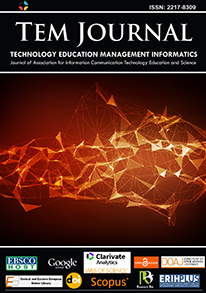A Comparative Study on Software-Defined Network with Traditional Networks
A Comparative Study on Software-Defined Network with Traditional Networks
Author(s): Berty Smitha Evelin Zoraida, Ganesan IndumathiSubject(s): Information Architecture, Electronic information storage and retrieval
Published by: UIKTEN - Association for Information Communication Technology Education and Science
Keywords: Software-Defined Networks (SDN); Wireless Sensor Networks (WSN); Packet Delivery Ratio; Packet loss Ratio; Malicious Node
Summary/Abstract: The emergence of a technological age, in which nearly everything is linked and accessible from anywhere, is largely due to the Internet. Hence, traditional Networks continue to be difficult and complex to operate despite their widespread deployment. As a consequence, it is challenging to set up the networks in accordance with the established protocols and respond to variations in load and defects by reconfiguring the structure. The data and control layers are packaged together in the contemporary systems, further complicating problems by vertically integrating them. Because of their limited resources and unsecured transmission channel, wireless sensor networks (WSNs) are particularly vulnerable to persistent security attacks. Many hundreds of self-organized and resource-constrained sensor nodes make up the WSN. It is possible to build an ad-hoc network of sensors without a specified architecture or centralised control because these sensor nodes are often organised in a scattered form. The underlying problem is to strengthen the privacy enforcement in these systems because WSNs will have power over real-time applications, where unauthorized conduct might lead to significant harm. In order to address this issue, the software-defined network (SDN) technology was developed. With the creation of SD, network operators now have more legitimacy and influence over the networks. Based on a global perspective and centralised management of the network topology, SDN has increased the rigour of its enhancing security. This study describes the software-defined network, outlining its fundamental ideas, how it differs from conventional networking, and its architectural tenets. Also, it highlighted the key benefits of SDN while emphasizing availability, maliciousness, packet delivery and duplication ratio, and efficiency.
Journal: TEM Journal
- Issue Year: 13/2024
- Issue No: 1
- Page Range: 167-176
- Page Count: 10
- Language: English

